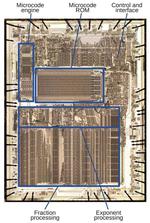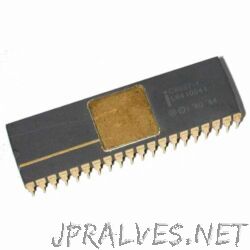Other

“The 8087 chip provided fast floating point arithmetic for the original IBM PC and became part of the x86 architecture used today. One unusual feature of the 8087 is it contained a multi-level ROM (Read-Only Memory) that stored two bits …

The Intel 8087, announced in 1980, was the first x87 floating-point coprocessor for the 8086 line of microprocessors. The purpose of the 8087 was to speed up computations for floating-point arithmetic, such as addition, subtraction, multiplication, division, and square root. It also computed transcendental functions such as exponential, logarithmic or trigonometric calculations, and besides floating-point it could also operate on large binary and decimal integers. The performance enhancements were from approximately 20% to over 500%, depending on the specific application. The 8087 could perform about 50,000 FLOPS using around 2.4 watts. Only arithmetic operations benefited from installation of an 8087; computers used only with such applications as word processing, for example, would not benefit from the extra expense (around $150) and power consumption of an 8087. The 8087 was an advanced IC for its time, pushing the limits of manufacturing technology of the period. Initial yields were extremely low.

“The 8087 chip provided fast floating point arithmetic for the original IBM PC and became part of the x86 architecture used today. One unusual feature of the 8087 is it contained a multi-level ROM (Read-Only Memory) that stored two bits …